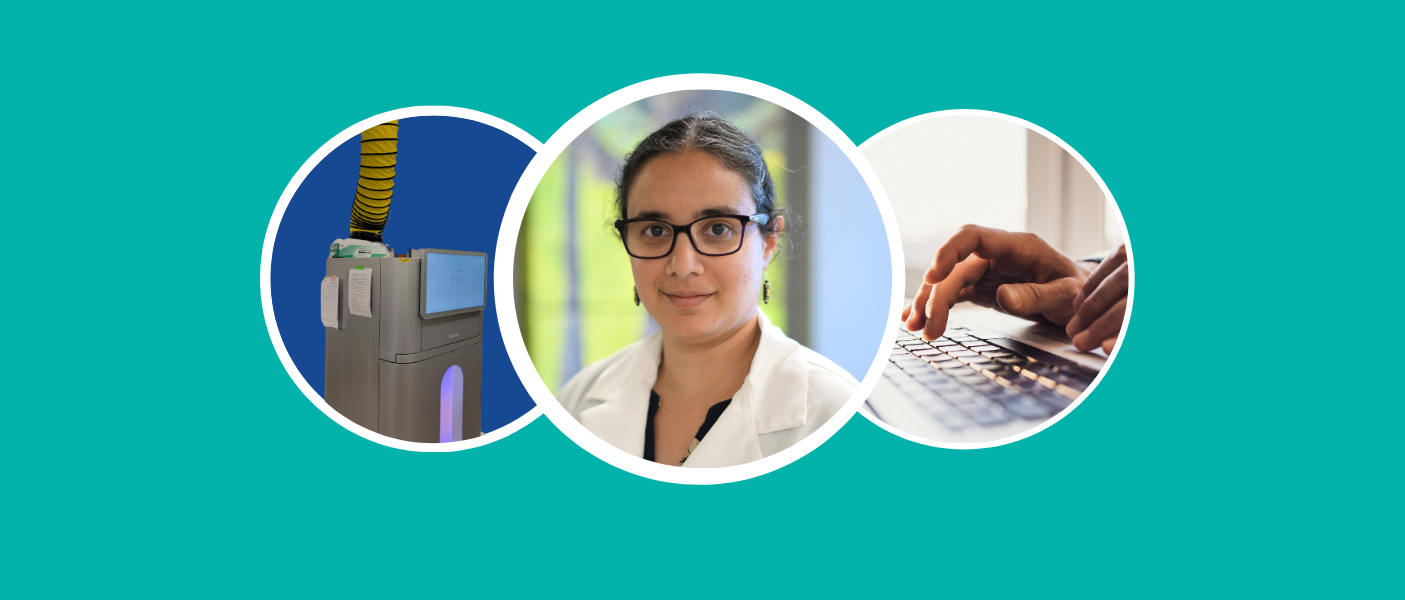

Molecular pathologists require a unique skillset that many may not even consider when thinking about a career in medicine. This specialty combines aspects of engineering, medicine, and informatics into a challenging and fulfilling career. Dr. Suguna Narayan, Assistant Professor, is a perfect example of someone who combined these interests into a fascinating career.
Narayan completed her undergraduate studies in chemical engineering at the University of Colorado before going to Northwestern University in Chicago to pursue an MD and PhD. “I did my PhD in biomedical engineering, focusing on using nanotechnology in diagnostics and therapeutic applications in the lab of Chad Mirkin, PhD,” she explained.
After she graduated, Narayan returned to Colorado for her anatomic and clinical pathology residency. “When I was in medical school, I did a pathology rotation, which I found very interesting. The process of diagnosis is what attracted me to medicine in the first place.” While in her residency, she went through various rotations, one of which was in molecular pathology. “The molecular pathologists had a lot of interesting work going on, and they were smart, inspiring people who made the work seem fun. So, I decided to pursue a molecular pathology fellowship – and that is how I came here.”
Narayan chose Michigan because she had the opportunity to do a combined molecular pathology and pathology informatics 2-year fellowship. “I wanted to understand the informatics infrastructure; the bioinformatics pipelines we use to process next-generation sequencing data. The pathology informatics program here is excellent, and Ul [Balis] is very well known and wonderful to work with.” Because the pathology informatics fellowship is not an ACGME-accredited fellowship program, it has the flexibility to be structured similarly to a postdoctoral fellowship. “In addition to the core competencies of informatics, the fellow gets to explore an area that they are interested in. The bulk of my informatics-only year was spent on a project related to molecular pathology.” She learned more about informatics ecosystems, how to design software systems for molecular pathology, variant visualization, and reporting, along with various tools for software development.
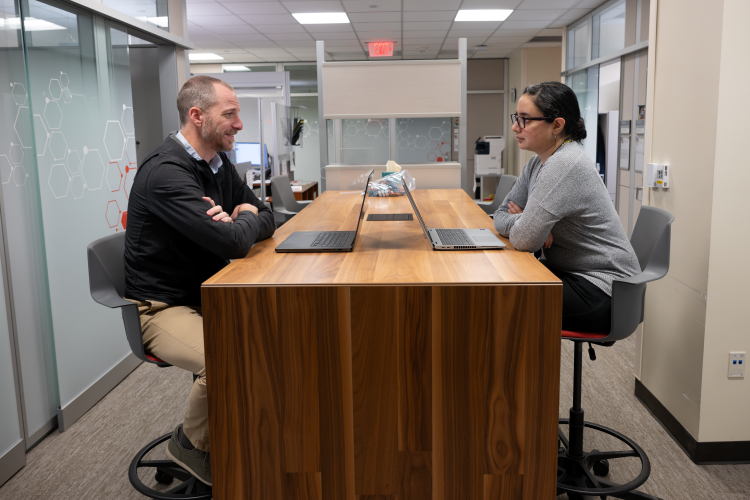 When Narayan completed her fellowship, she was quickly recruited to join the Division of Diagnostic Genetics and Genomics faculty. In the DGG, she signs out solid tumor molecular pathology cases for about 50% of her time. During the rest of her time, she works on software development and helps build the informatics infrastructure for this new unit. “We are trying to build a cohesive data ecosystem through DGG that can house data from multiple types of assays. We are converting our legacy software solutions to a more modern architecture that makes it easy to store, retrieve, and analyze data. We are also designing and building custom software applications, designing user interfaces that integrate well with lab workflows.” One of the keys to this team's success is the diversity in skillsets, backgrounds, and perspectives. “It is so important to have different perspectives in the room when doing this kind of development. It is nice to have informatics colleagues who are also well-versed in molecular pathology and the genomics world to design something that is truly state-of-the-art.”
When Narayan completed her fellowship, she was quickly recruited to join the Division of Diagnostic Genetics and Genomics faculty. In the DGG, she signs out solid tumor molecular pathology cases for about 50% of her time. During the rest of her time, she works on software development and helps build the informatics infrastructure for this new unit. “We are trying to build a cohesive data ecosystem through DGG that can house data from multiple types of assays. We are converting our legacy software solutions to a more modern architecture that makes it easy to store, retrieve, and analyze data. We are also designing and building custom software applications, designing user interfaces that integrate well with lab workflows.” One of the keys to this team's success is the diversity in skillsets, backgrounds, and perspectives. “It is so important to have different perspectives in the room when doing this kind of development. It is nice to have informatics colleagues who are also well-versed in molecular pathology and the genomics world to design something that is truly state-of-the-art.”
Narayan’s goal over the next few years is to help develop a unified data ecosystem that accommodates the wide variety of assays run in the DGG. “Developing a single ecosystem is an enormous challenge, and being able to lay the groundwork for further development would be great.”
When she is not at work, Narayan enjoys traveling wherever there is sunshine, and to escape the cloudy Michigan days. She has made numerous trips to India, where her family originated, and loves Colorado’s bright sunlit peaks.
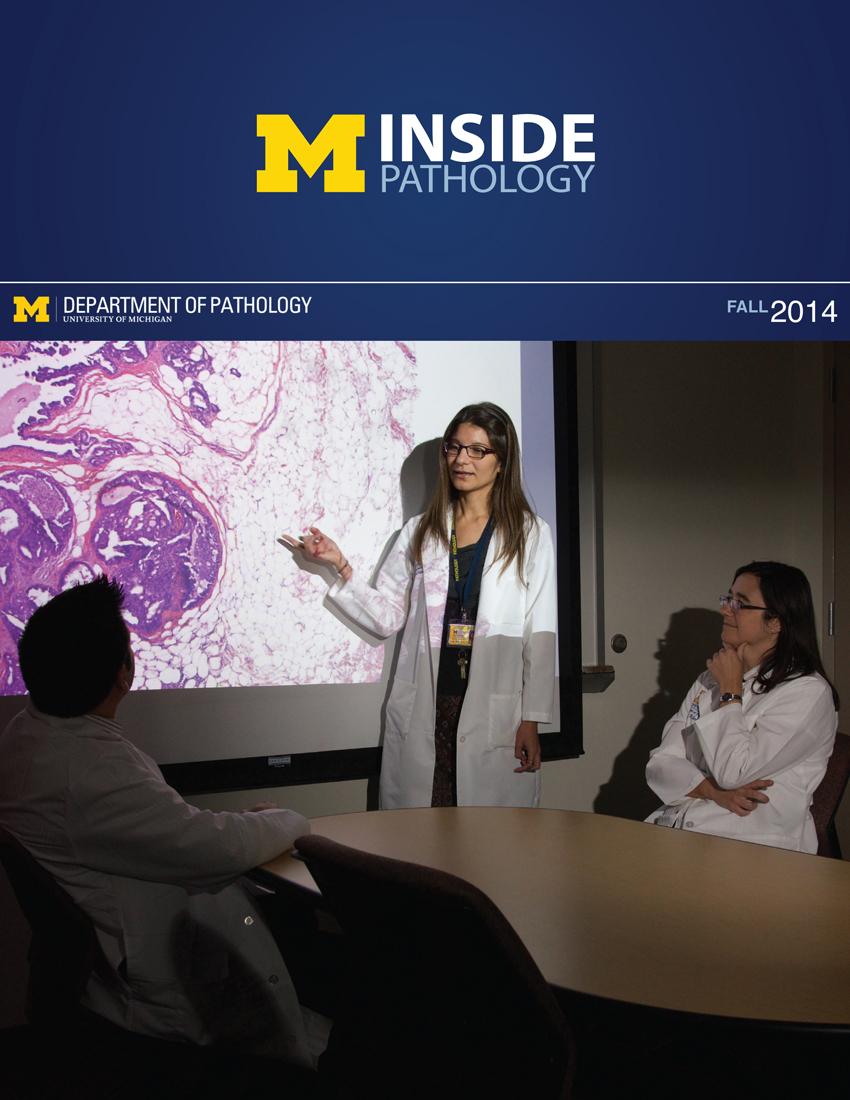 ON THE COVER
ON THE COVER
Breast team reviewing a patient's slide. (From left to right) Ghassan Allo, Fellow; Laura Walters, Clinical Lecturer; Celina Kleer, Professor. See Article 2014Department Chair |

newsletter
INSIDE PATHOLOGYAbout Our NewsletterInside Pathology is an newsletter published by the Chairman's Office to bring news and updates from inside the department's research and to become familiar with those leading it. It is our hope that those who read it will enjoy hearing about those new and familiar, and perhaps help in furthering our research. CONTENTS
|
 ON THE COVER
ON THE COVER
Autopsy Technician draws blood while working in the Wayne County morgue. See Article 2016Department Chair |

newsletter
INSIDE PATHOLOGYAbout Our NewsletterInside Pathology is an newsletter published by the Chairman's Office to bring news and updates from inside the department's research and to become familiar with those leading it. It is our hope that those who read it will enjoy hearing about those new and familiar, and perhaps help in furthering our research. CONTENTS
|
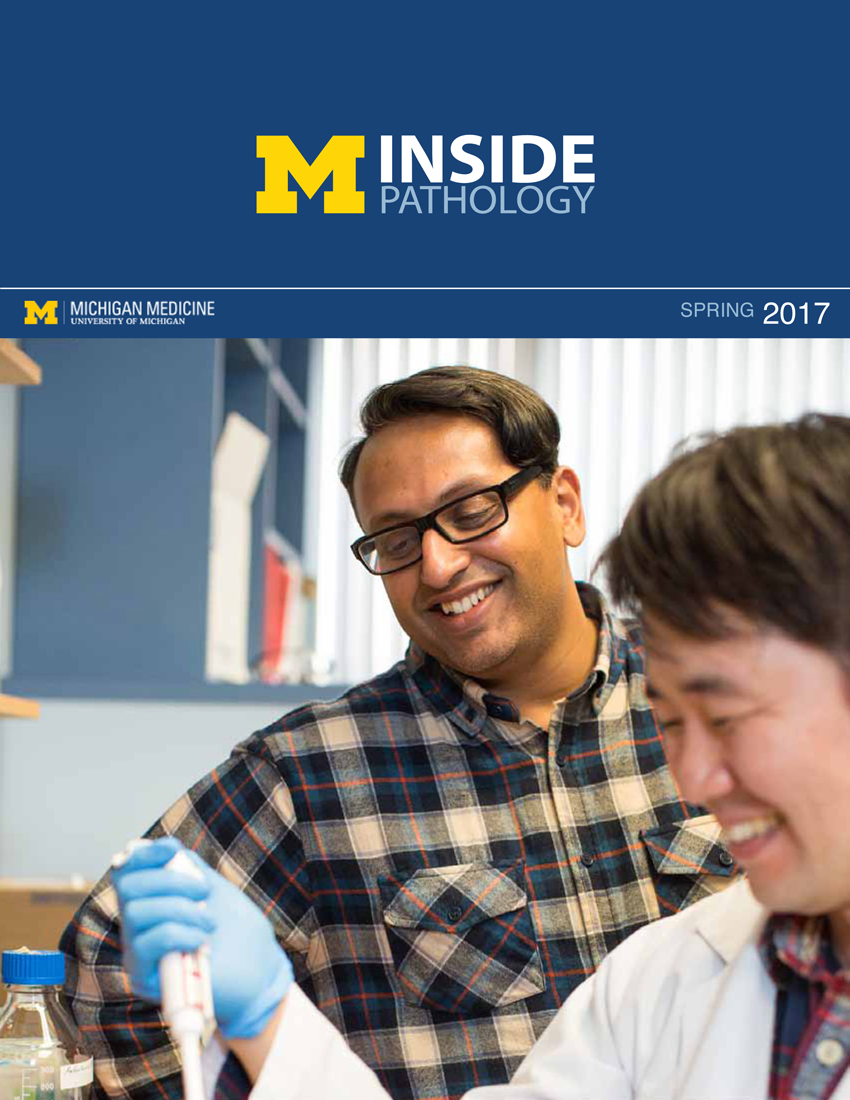 ON THE COVER
ON THE COVER
Dr. Sriram Venneti, MD, PhD and Postdoctoral Fellow, Chan Chung, PhD investigate pediatric brain cancer. See Article 2017Department Chair |

newsletter
INSIDE PATHOLOGYAbout Our NewsletterInside Pathology is an newsletter published by the Chairman's Office to bring news and updates from inside the department's research and to become familiar with those leading it. It is our hope that those who read it will enjoy hearing about those new and familiar, and perhaps help in furthering our research. CONTENTS
|
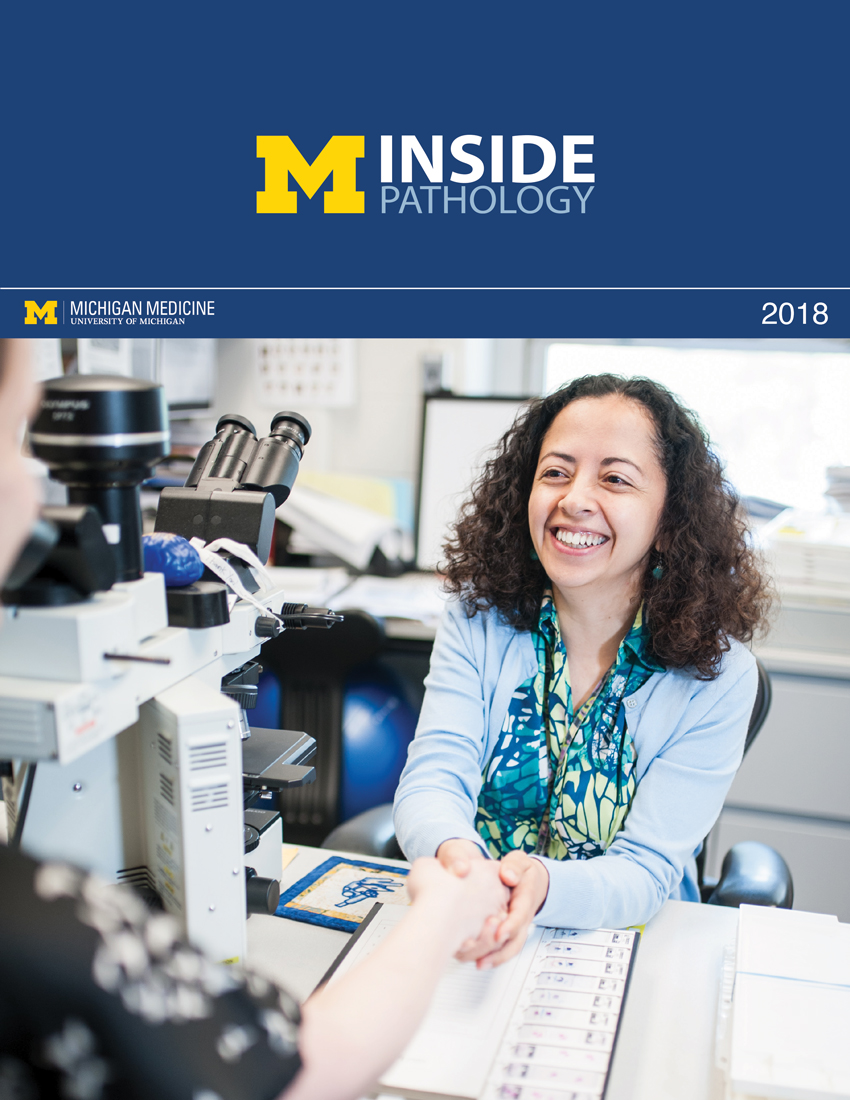 ON THE COVER
ON THE COVER
Director of the Neuropathology Fellowship, Dr. Sandra Camelo-Piragua serves on the Patient and Family Advisory Council. 2018Department Chair |

newsletter
INSIDE PATHOLOGYAbout Our NewsletterInside Pathology is an newsletter published by the Chairman's Office to bring news and updates from inside the department's research and to become familiar with those leading it. It is our hope that those who read it will enjoy hearing about those new and familiar, and perhaps help in furthering our research. CONTENTS
|
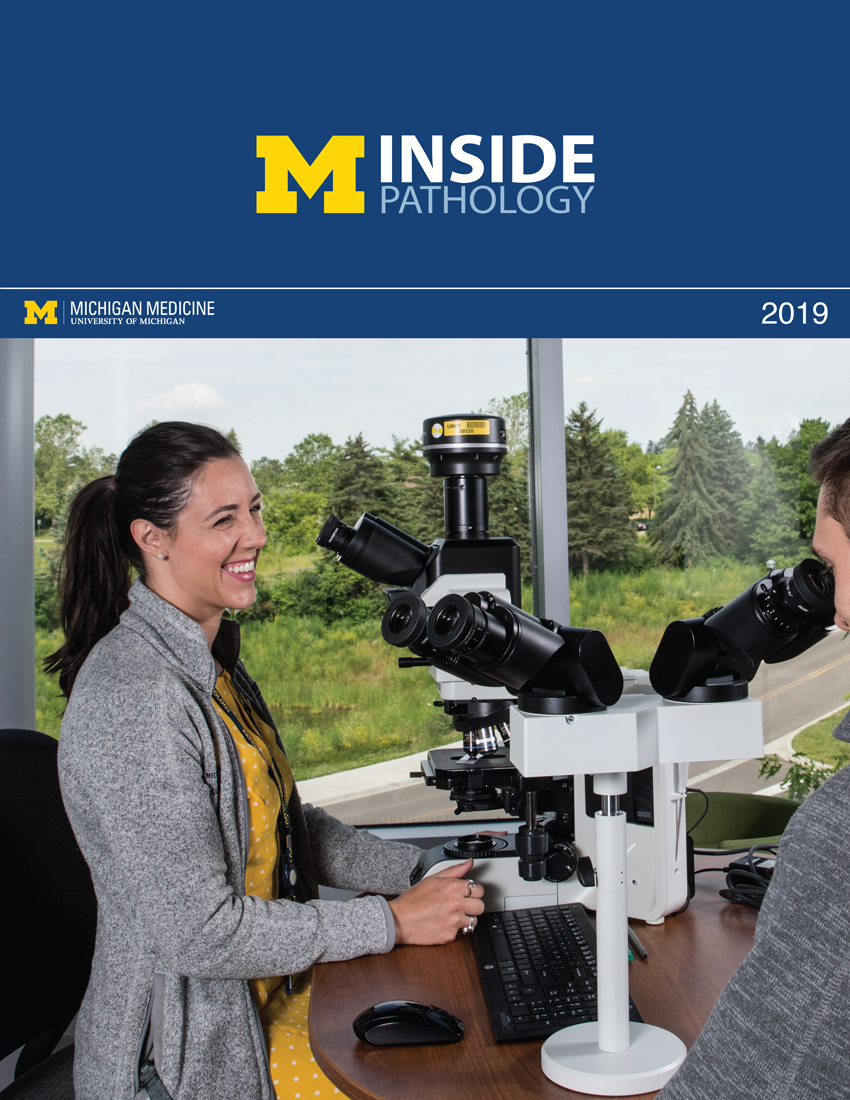 ON THE COVER
ON THE COVER
Residents Ashley Bradt (left) and William Perry work at a multi-headed scope in our new facility. 2019Department Chair |

newsletter
INSIDE PATHOLOGYAbout Our NewsletterInside Pathology is an newsletter published by the Chairman's Office to bring news and updates from inside the department's research and to become familiar with those leading it. It is our hope that those who read it will enjoy hearing about those new and familiar, and perhaps help in furthering our research. CONTENTS
|
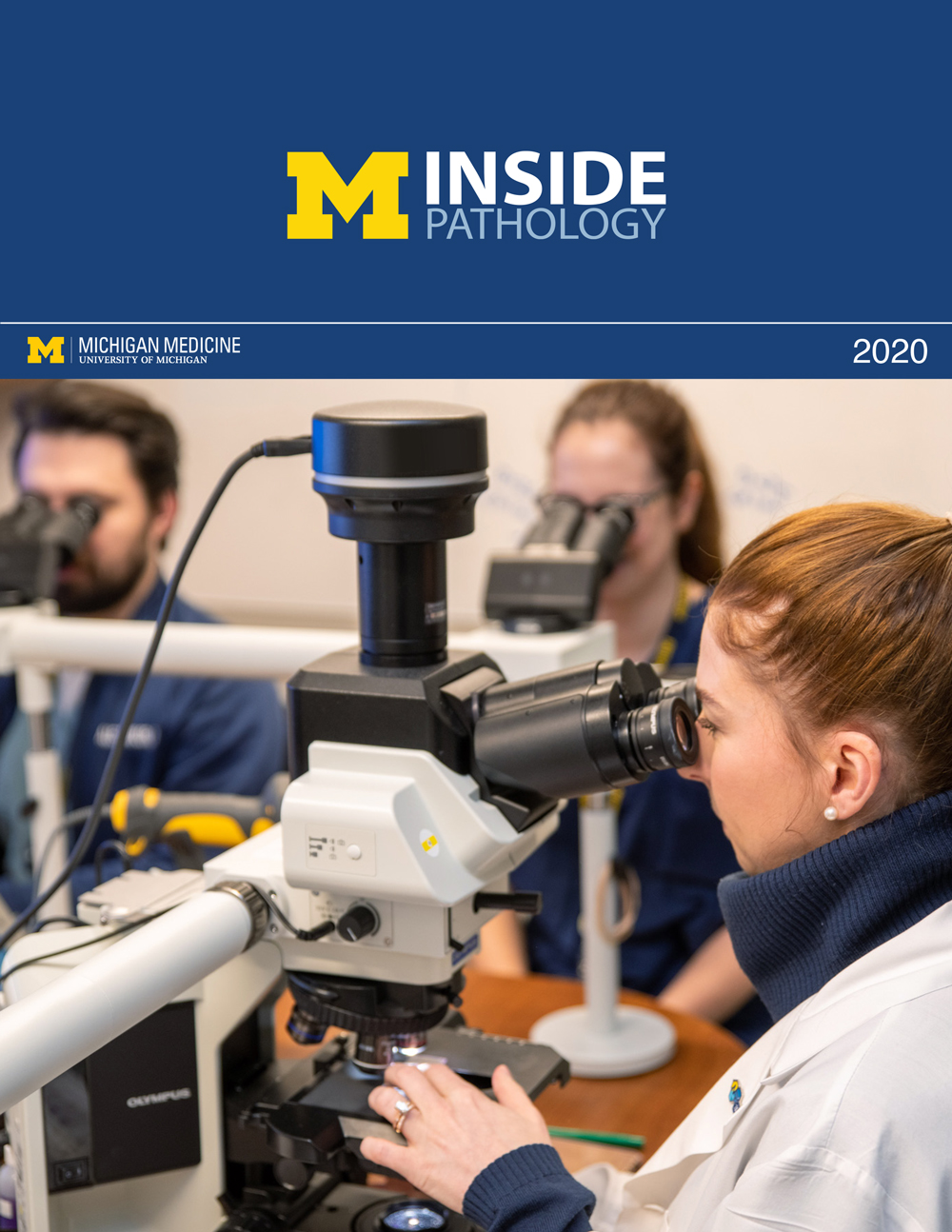 ON THE COVER
ON THE COVER
Dr. Kristine Konopka (right) instructing residents while using a multi-headed microscope. 2020Department Chair |

newsletter
INSIDE PATHOLOGYAbout Our NewsletterInside Pathology is an newsletter published by the Chairman's Office to bring news and updates from inside the department's research and to become familiar with those leading it. It is our hope that those who read it will enjoy hearing about those new and familiar, and perhaps help in furthering our research. CONTENTS
|
 ON THE COVER
ON THE COVER
Patient specimens poised for COVID-19 PCR testing. 2021Department Chair |

newsletter
INSIDE PATHOLOGYAbout Our NewsletterInside Pathology is an newsletter published by the Chairman's Office to bring news and updates from inside the department's research and to become familiar with those leading it. It is our hope that those who read it will enjoy hearing about those new and familiar, and perhaps help in furthering our research. CONTENTS
|
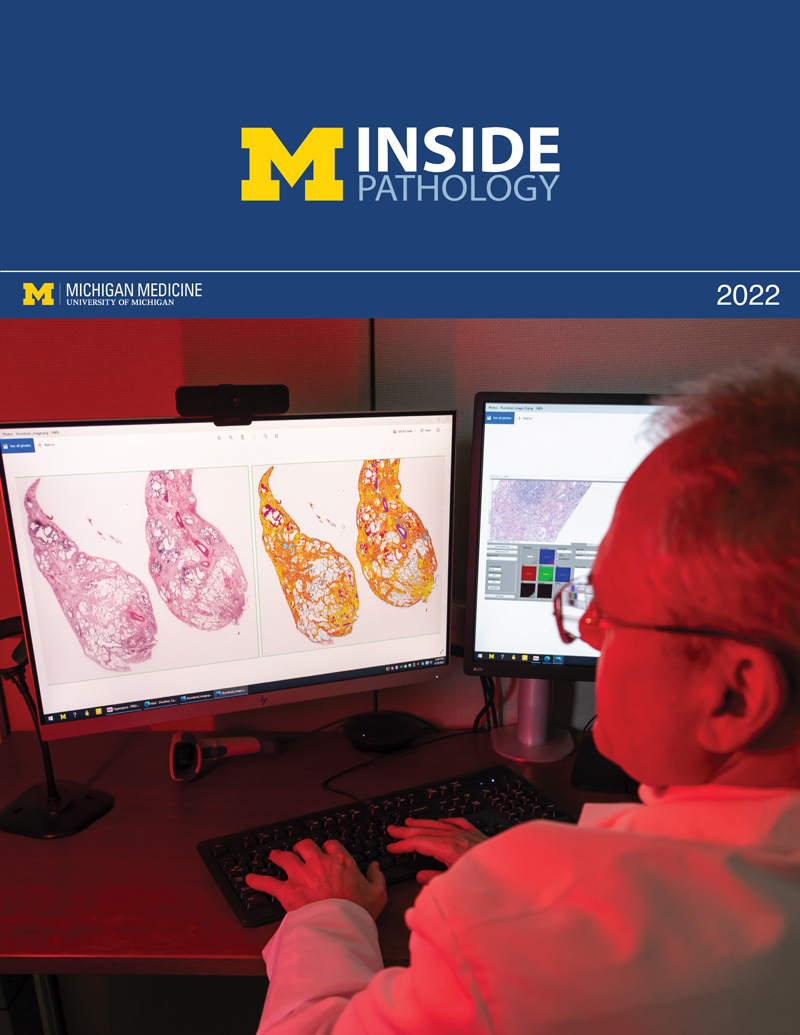 ON THE COVER
ON THE COVER
Dr. Pantanowitz demonstrates using machine learning in analyzing slides. 2022Department Chair |

newsletter
INSIDE PATHOLOGYAbout Our NewsletterInside Pathology is an newsletter published by the Chairman's Office to bring news and updates from inside the department's research and to become familiar with those leading it. It is our hope that those who read it will enjoy hearing about those new and familiar, and perhaps help in furthering our research. CONTENTS
|
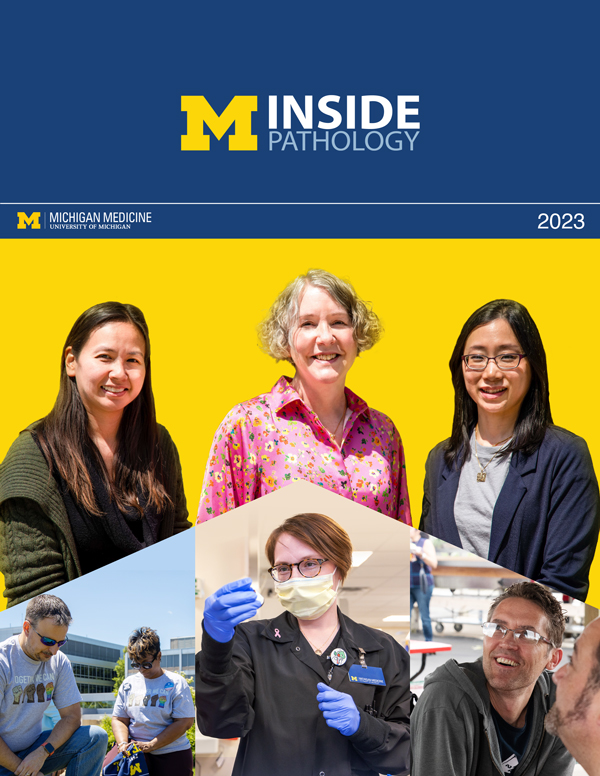 ON THE COVER
ON THE COVER
(Left to Right) Drs. Angela Wu, Laura Lamps, and Maria Westerhoff. 2023Department Chair |

newsletter
INSIDE PATHOLOGYAbout Our NewsletterInside Pathology is an newsletter published by the Chairman's Office to bring news and updates from inside the department's research and to become familiar with those leading it. It is our hope that those who read it will enjoy hearing about those new and familiar, and perhaps help in furthering our research. CONTENTS
|
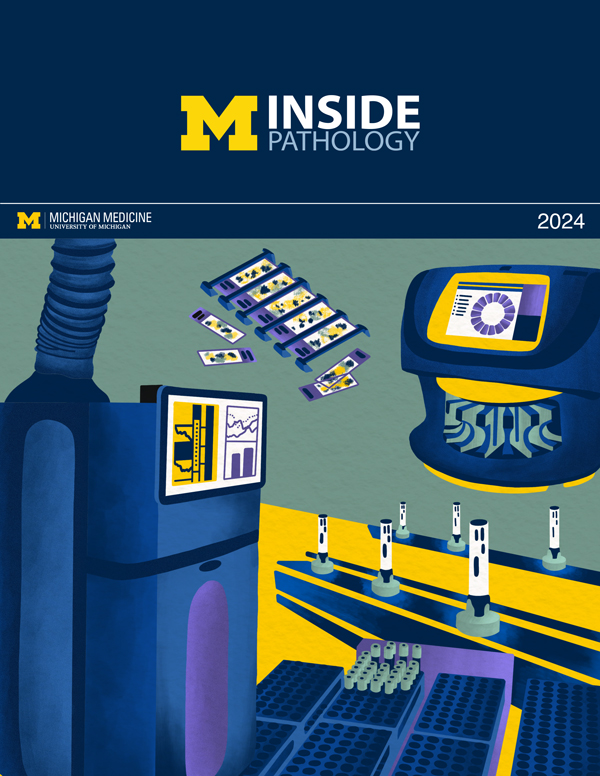 ON THE COVER
ON THE COVER
Illustration representing the various machines and processing used within our labs. 2024Department Chair |

newsletter
INSIDE PATHOLOGYAbout Our NewsletterInside Pathology is an newsletter published by the Chairman's Office to bring news and updates from inside the department's research and to become familiar with those leading it. It is our hope that those who read it will enjoy hearing about those new and familiar, and perhaps help in furthering our research. CONTENTS
|
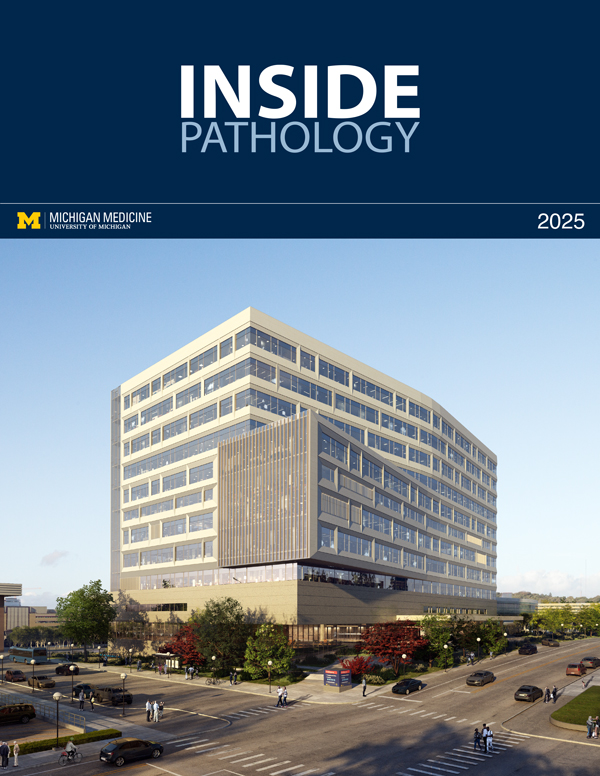 ON THE COVER
ON THE COVER
Rendering of the D. Dan and Betty Khn Health Care Pavilion. Credit: HOK 2025Department Chair |

newsletter
INSIDE PATHOLOGYAbout Our NewsletterInside Pathology is an newsletter published by the Chairman's Office to bring news and updates from inside the department's research and to become familiar with those leading it. It is our hope that those who read it will enjoy hearing about those new and familiar, and perhaps help in furthering our research. CONTENTS
|

MLabs, established in 1985, functions as a portal to provide pathologists, hospitals. and other reference laboratories access to the faculty, staff and laboratories of the University of Michigan Health System’s Department of Pathology. MLabs is a recognized leader for advanced molecular diagnostic testing, helpful consultants and exceptional customer service.